I was busy photographing a gull. It’s a familiar situation for my partner. While he has spotted something genuinely exciting, I am consistently looking in the opposite direction, capturing images of something run-of-the-mill.
“Rhiannon, there’s a seal over there”. Ok, now he’s got my full attention. While my ‘seals’ usually end up being balls or buoys or pieces of driftwood, my partner has keen eyesight and is very observant. I point my lens out towards the centre of the channel at Lunderston Bay. “No, it’s on the rock right there”. He’s frantically gesticulating at me now. I still can’t see it. “No, right there!”
You are probably wondering how I got into photographing wildlife, if I can’t see an animal right in front of me. But that was exactly what confused me – the seal was right in front of us, hauled out on a rock close to the shore and easily visible from the coastal path. I’m not used to this kind of close-up seal. I’m more familiar with the faraway blurry blob on the horizon seals. “Oh look, there it is!”, I exclaimed while my partner gave me what could only be described as an exasperated look.
After I’d got over my initial joy at seeing the harbour seal, I looked at my options for photographing him. Many people strolled by without seeing him, while some stopped to look. We headed down to the beach, sat low on the rocks and kept our distance. Apart from occasionally looking in the direction of where others were standing on the path, the seal remained comfortable.
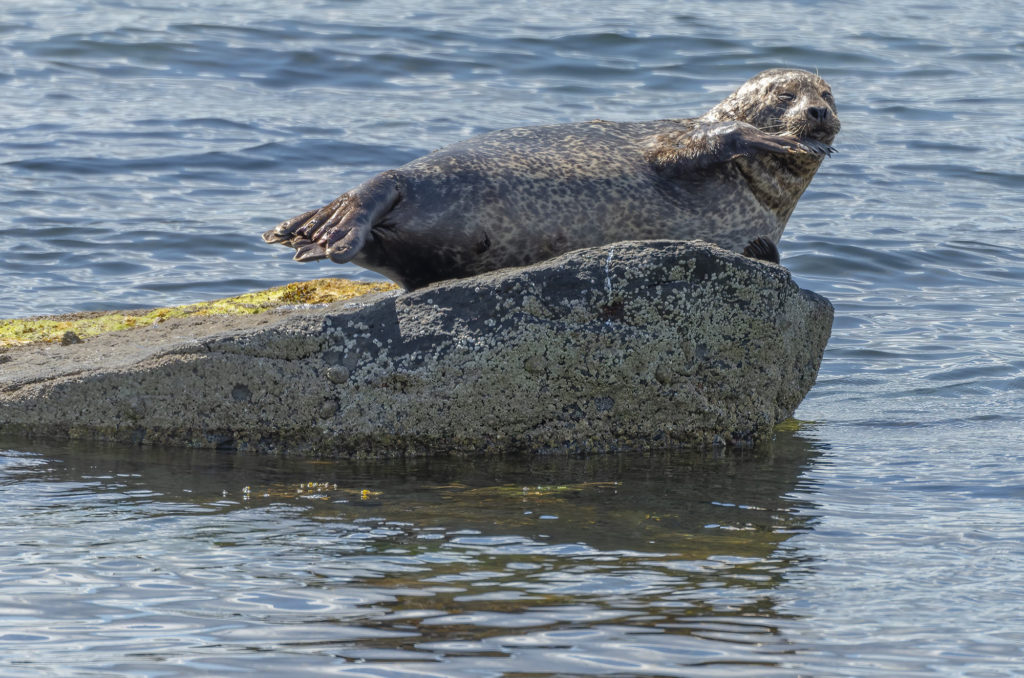
In fact, he frequently nodded off. I had to capture many frames to get just a few with his eyes open, like the one below.
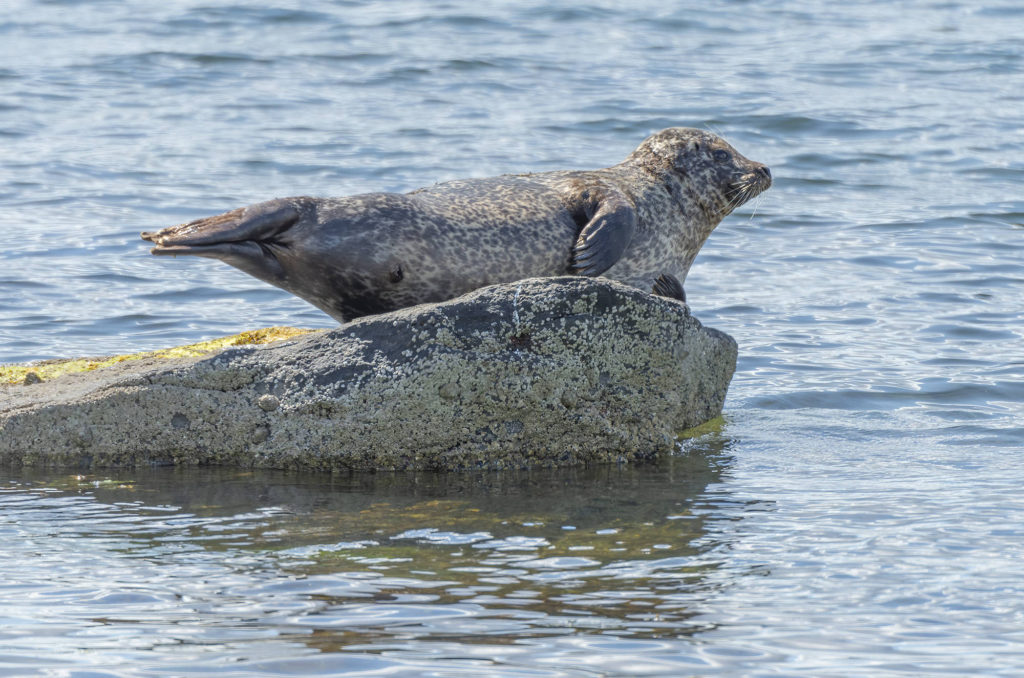
When photographing a relaxed individual that is fairly static, don’t be afraid to stop capturing images when you think you have enough frames. Trust your gut – if the animal repeats the same poses, draw a line under it and try something different.
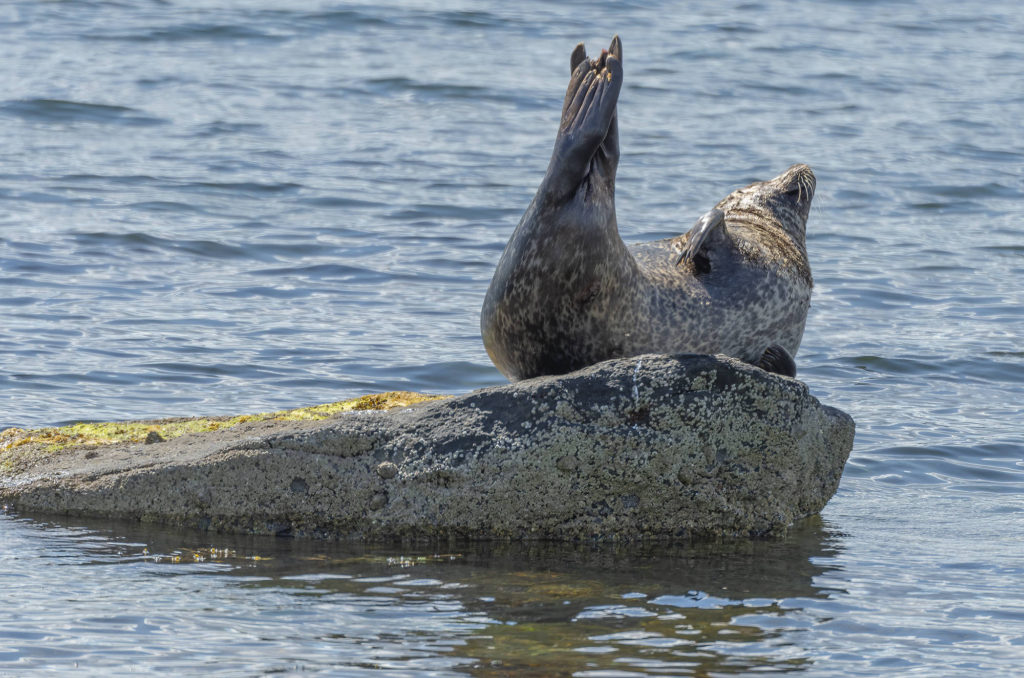
For me, this meant changing positions. I moved from sitting on a rock to stretching out on the grassy bank to photograph him from a different angle. This strategy worked perfectly for images but did result in a few painful cleg (horse fly) bites. Again, I moved on when satisfied with the images captured.
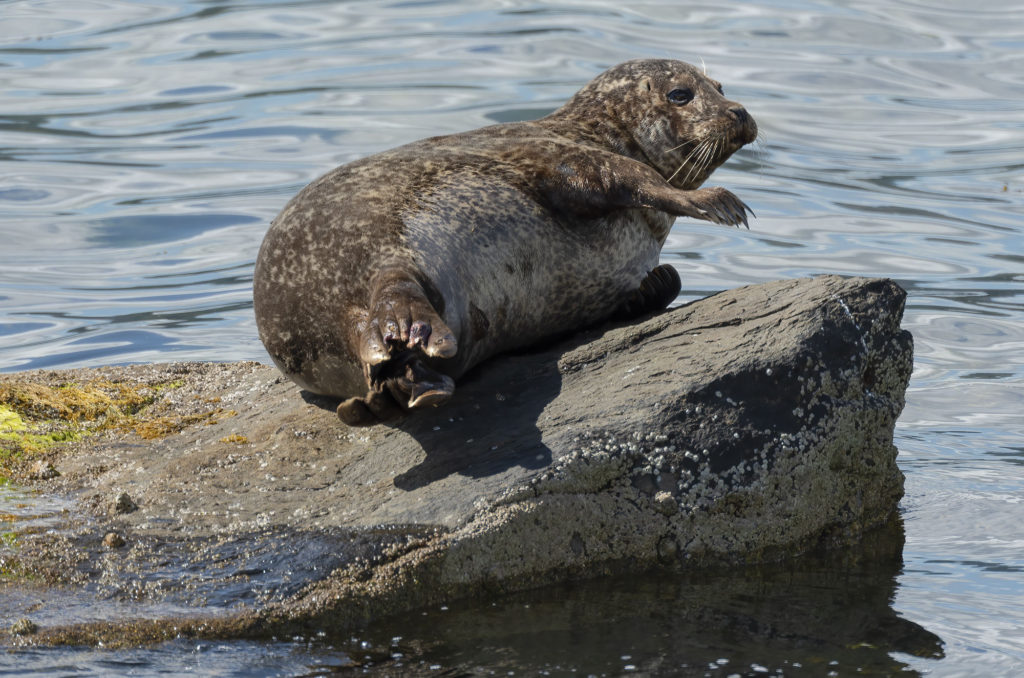
Although the seal was completely unconcerned by our presence (we kept our distance and stayed out of sight), he did occasionally stare in the direction of the path, which seemed to coincide with when dog walkers went past. It is vital to monitor seal behaviour to ensure that your presence does not disturb them/ It doesn’t take much to cause distress or harm. It is luckily easy to spot when you are causing a problem. As a rule, keeping your distance on land and water is the best way to ensure they remain relaxed. Also, look for signs of stress such as seals raising their heads and looking at you, bulging eyes (revealing the white parts around the iris) and any movement away from you. Keeping dogs on a lead is essential, as even the most trusted canine can decide to run over and investigate a hauled-out seal. Finally, keeping noise levels to a minimum is critical – think about how you like to be treated when you are snoozing on the beach!
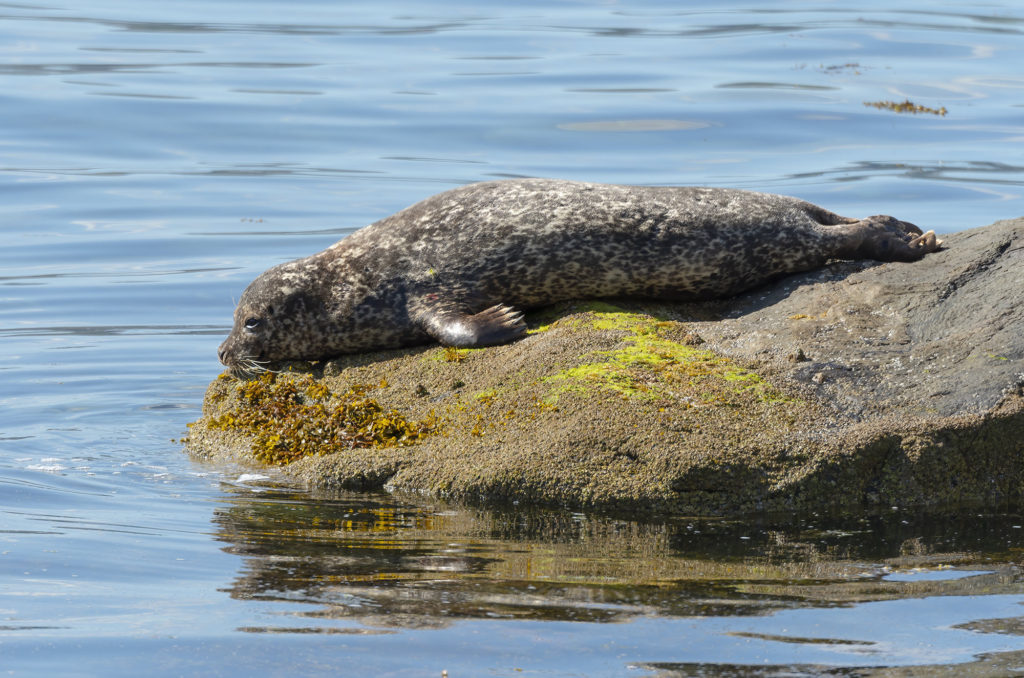
While we continued our walk, I couldn’t help worrying that someone would try to get too close to the seal. On the return leg along the path, he was where we’d left him – on the same rock, snoozing in the late afternoon sun. A picture-perfect summer encounter.

